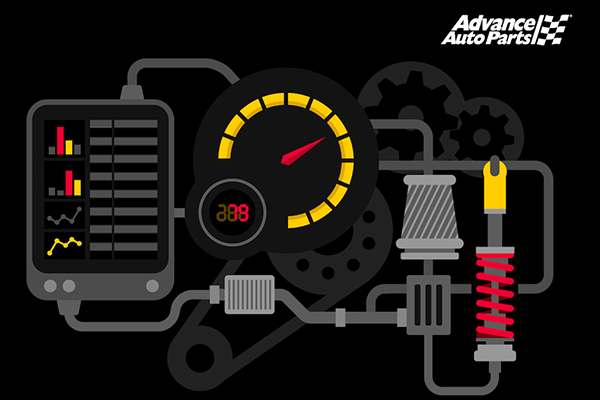When Ford introduced the current generation of Mustang, it put together a pretty good package. It's stylish, evokes Mustangs of years past, and is comfortable, well-designed, and fast, with excellent road manners and good fuel economy.
But can it be improved? Of course! Here are 10 ideas for high-performance Mustang mods.

Brakes
The Mustang comes from the factory with a pretty good set of stoppers, but you could upgrade to slotted rotors, ceramic pads, or heavy-duty calipers. Check out the assortment of brake parts from Akebono, Brembo, and others to give your late-model Mustang some real stopping power.
Differential gears
Like most newer vehicles, the Mustang comes with a fairly tall rear-end ratio that's good for fuel economy since it keeps the tachometer's RPMs low at highway speed. It's not so good for acceleration off the line, though. If you don't mind a slight hit in fuel economy, consider changing the final differential gears for a more performance-oriented lower ratio. Note that this is a difficult installation that requires a lot of know-how and is best left to a professional or expert DIYer.
Cold air induction
The engine runs on air, fuel, and spark, and whenever you can enhance one of those, you can see an improvement in performance and power. Cold air is denser, resulting in a more efficient charge for the fuel/air mixture. It's the reason that '60s muscle cars used functional hood scoops to direct more cool air into the engine. Cold air induction systems or cold air intakes are easy to install, with a duct system and a less-restrictive air filter.
Driveshaft
A stock Mustang driveshaft is a heavy-gauge steel unit, which means more rotational mass and more drag on the engine. A lightweight aluminum driveshaft can deliver torque to your differential more efficiently, for quicker response and faster acceleration times.
Lowering springs
Lowering your vehicle changes its center of gravity and improves cornering performance without changing the basic chassis and suspension geometry. Just bear in mind that stiffer shocks and lowering springs can also mean harsher ride quality and, of course, your Mustang's air dam and undercarriage are going to be more vulnerable to potholes or sloping driveways.
Shocks and struts
Ford designed the Mustang with a nimble suspension and good road manners, but there's always room for improvement. An upgrade in shocks and struts can tighten handling and cornering ability without too much of a sacrifice in ride quality.
Tires
This one's kind of a no-brainer. Any vehicle can be improved with the right set of tires, and tires that have a fatter contact patch and softer, stickier rubber compound can enhance your traction, handling, and acceleration all at the same time. By the same token, an upgrade in wheels can mean lower unsprung weight and better braking and handling performance.
Sway bar
An aftermarket sway bar, with stiffer bushings tuned for a specific response rate, can go a long way toward reducing body lean and understeer while cornering and enhance road manners as well.
Tuning
The term "performance chip" is outdated and a misnomer. What you need instead is a programmer that can reset some of the engine control computer's parameters for fuel metering, timing, transmission shift points, and other factors. A tuner can change the values of all these and get a different, enhanced performance profile out of the computer without changing emissions levels, and can then be reset back to factory spec. A note of caution, though: This type of tuning might void a factory warranty.
Suspension bushings
Replacing your Mustang's stock suspension bushings with stiffer polyurethane or Delrin bushings will tighten up the whole suspension and help the frame and suspension better handle the torque that a powerful engine can deliver. Not unlike spring rate or shocks, suspension bushing materials are tuned for specific characteristics and response—and aftermarket bushings will last the entire life cycle of the vehicle.








